The NLP and LLM Technologies: A Comparative Guide
AI, Deep Learning, Machine Learning, Data Science
The NLP and LLM technologies are central to the analysis and generation of human language on a large scale. With their growing prevalence, distinguishing between LLM vs NLP becomes increasingly important.
NLP encompasses a suite of algorithms to understand, manipulate, and generate human language. Since its inception in the 1950s, NLP has evolved to analyze textual relationships. It uses part-of-speech tagging, named entity recognition, and sentiment analysis methods.
As exemplified by OpenAI’s ChatGPT, LLMs leverage deep learning to train on extensive text sets. Although they can mimic human-like text, their comprehension of language’s nuances is limited. Unlike NLP, which focuses on language analysis, LLMs primarily generate text.
I am pleased to present this guide, offering a concise yet comprehensive comparison of NLP and LLMs. We will explore the intricacies of these technologies, delve into their diverse applications, and examine their challenges.
Exploring the Distinctive Features of NLP
NLP facilitates machines’ understanding and engagement with human language in meaningful ways. It can be used for applications from spell-checking and auto-correction to chatbots and voice assistants.
NLP is about creating algorithms that enable the generation of human language. It bridges the gap between digital systems and human communication. This technology paves the way for enhanced data analysis and insight across industries.
Essential Technologies in NLP: From Parsing to Natural Language Generation
Natural Language Processing relies on various processes to enable computers to produce human language:
- Parsing: This technique dissects a sentence into its grammatical elements. It simplifies the language structure for machines. It aids in recognizing parts of speech, sentence limits, and syntactic connections.
-
Semantic Analysis: Advances beyond simple word identification to grasp the meanings and relationships among words. It’s vital for interpreting the context of texts, idioms, and humor.
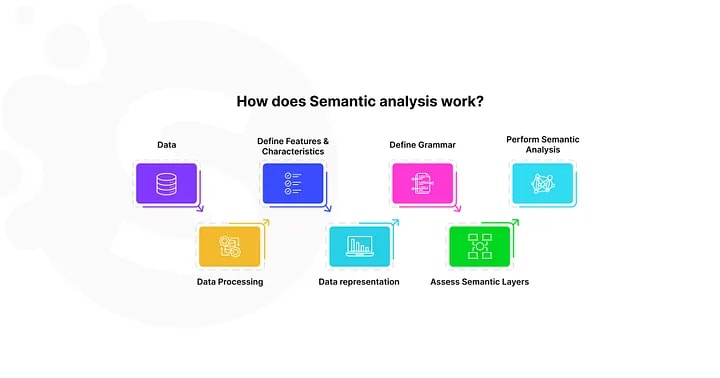
- Speech Recognition: Transforms spoken words into written text, enabling audio transcription into a readable format.
- Natural Language Generation: Contrary to speech recognition, NLG provides text that mimics human writing based on computer data. Applications include report writing, summarizing, and drafting messages.
-
Sentiment Analysis: Often used in monitoring social media and managing brand reputation. It evaluates the emotional tone of texts and analyzes customer feedback and market trends.
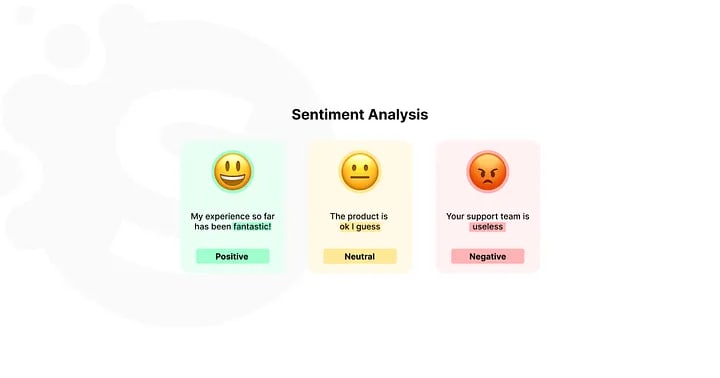
- Machine Translation: Enables the conversion of text or speech from one language to another.
-
Named Entity Recognition: Detects and classifies essential information in texts, such as names of individuals, places, and organizations.
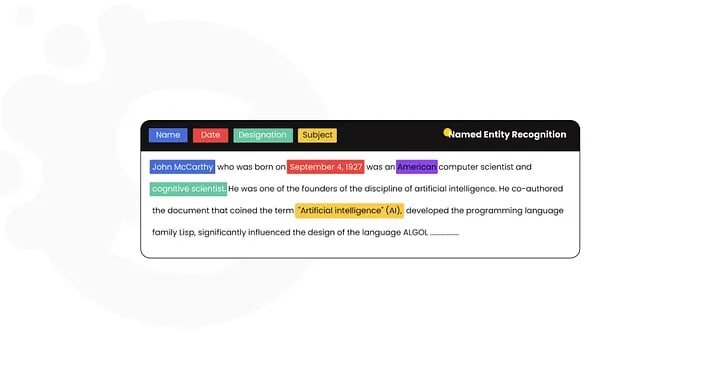
- Text Classification and Categorization: Assigns labels to texts to facilitate sorting and management of vast data volumes. This is useful for organizing documents, emails, and online content.
NLP Applications: Enhancing Communication and Analysis
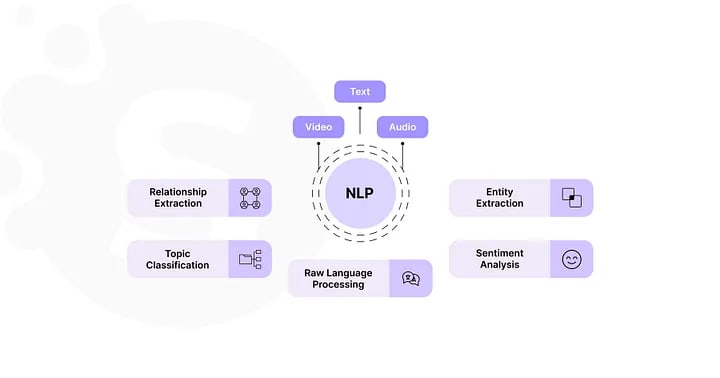
NLP’s applications are extensive, influencing various sectors by:
- Text Analytics: Analyzes large text datasets to derive significant insights. It can be beneficial in market research and social media scrutiny.
- Speech Recognition: Powers voice-activated devices and applications to comprehend and act on spoken instructions. This technology underpins virtual assistants and transcription tools.
- Sentiment Analysis: Examines text for emotional undertones. It is crucial for monitoring public opinion and conducting market research.
- Machine Translation: Breaks language barriers by translating texts or speech, facilitating international communication.
- Content Recommendation: Utilizes NLP to tailor content suggestions based on user preferences and content characteristics. It also enhances experiences on streaming platforms and online shopping.
Challenges in NLP: Navigating Through Limitations
Despite progress, NLP encounters several hurdles that, if addressed, could refine its accuracy and integration into technology:
- Contextual Understanding: Grasping language nuances (sarcasm or idiomatic expressions) remains challenging, leading to misunderstandings.
- Language Diversity: The sheer number of languages and dialects, each with its grammar and syntax, poses a significant challenge.
- Ambiguity in Language: The inherent ambiguity of human language can complicate the interpretation of NLP systems.
- Data Quality and Availability: The performance of NLP systems is contingent on the quality and volume of training data. Biases in this data can result in skewed outcomes.
- Computational Resources: The demand for substantial computational power for advanced apps limits their development and deployment.
- Real-Time Processing: Achieving it for applications like simultaneous translation and customer service presents technological challenges.
Exploring the Capabilities of Large Language Models
Large Language Models offer a comprehensive approach to language tasks. They exhibit fluency and adaptability far beyond traditional Natural Language Processing systems. LLMs utilize a sophisticated tech stack for generative AI, enabling them to:
- Generate coherent and contextually appropriate text.
- Engage in meaningful conversations.
- Provide answers to questions.
- Create content that closely resembles human writing.
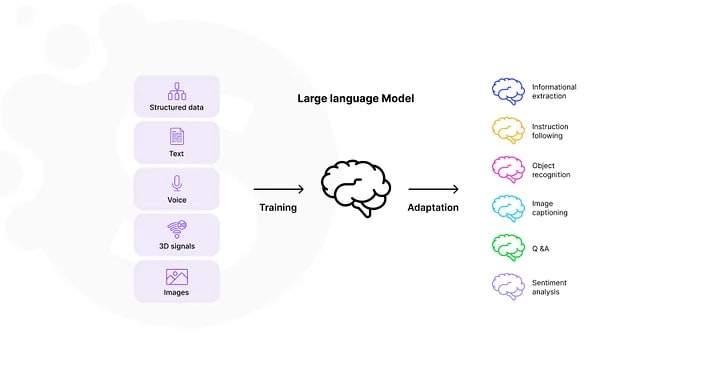 ### Distinguishing Features of LLMs
### Distinguishing Features of LLMs
LLMs are characterized by several key attributes that set them apart:
- Extensive Training Data: LLMs are trained on vast datasets from diverse text sources. This approach allows them to produce various language styles and formats.
- Adaptability: Language models can tackle various language tasks without needing specific training for each task. LLMs are highly versatile for automated content creation and advanced chatbot functionalities.
- Contextual Understanding: LLMs generate text relevant to the context, maintaining coherence across text passages.
- Continual Learning: LLMs can refine and expand their language capabilities with exposure to new data. They continue adapting to emerging slang and terminologies.
Core Technologies Behind LLMs
The effectiveness of Large Language Models is rooted in their foundational technologies:
-
Deep Learning: LLMs can autonomously learn and make decisions using neural networks with multiple layers.
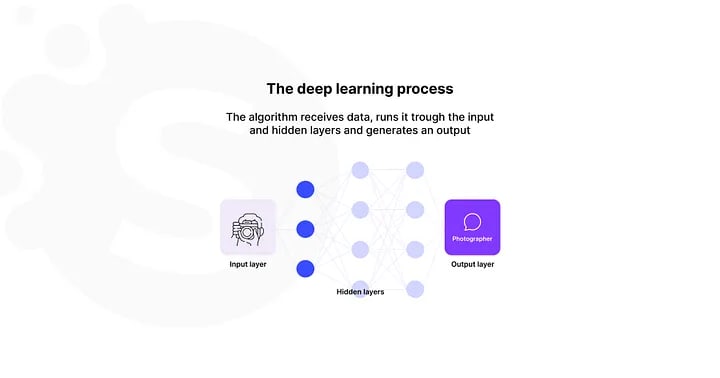
-
Transformers Architecture: These models are designed for handling sequential data, enabling accurate predictions of the next word in a sentence.
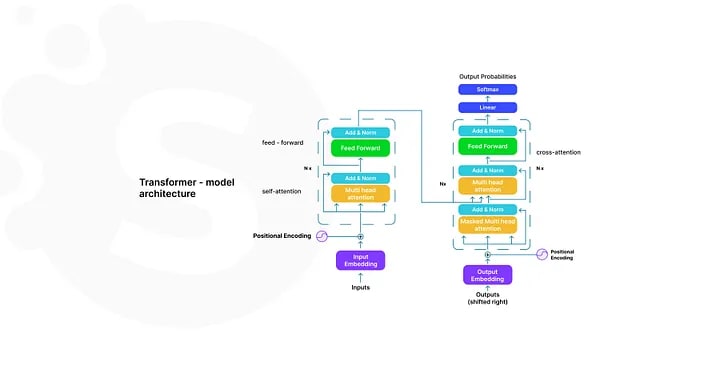
- Self-Attention Mechanisms: LLMs can produce more relevant responses by assessing the significance of each word.
- Scalability: LLMs’ capabilities can be enhanced by training them with progressively larger datasets.
Practical Applications of LLMs
LLMs find application in a myriad of sectors, including:
- Content Creation: From generating articles and reports to crafting poetry and fiction.
- Customer Service: Providing efficient and accurate automated responses through chatbots. For instance, developing a ChatGPT plugin can enhance user experience in service-oriented sectors.
- Language Translation: With a deep understanding of linguistic nuances, LLMs can facilitate global communication.
- Educational Tools: Assisting in tutoring, creating personalized learning materials, grading assignments, and summarizing extensive texts.
- Healthcare: Supporting patient interaction, information management, and the analysis of medical documents.
Challenges and Ethical Considerations of LLMs
Despite their advanced capabilities, LLMs face limitations and ethical dilemmas that need careful consideration:
- Bias and Fairness: LLMs learn from pre-existing data, which raises concerns over fairness and representation.
- Accuracy and Reliability: Outputs may sometimes reflect data patterns rather than factual correctness. It often leads to inaccuracies or nonsensical responses.
- Lack of True Understanding: LLMs simulate comprehension but lack genuine understanding. This can result in errors or inappropriate outputs in complex scenarios.
- Data Privacy: The handling of potentially sensitive data underscores the importance of stringent data governance.
- Energy Consumption: Just like for NLP, the significant computational resources required pose environmental and resource allocation concerns.
Comparative Analysis: NLP vs LLM
NLP and LLM play pivotal roles in enhancing human-computer interaction through language. Although they share common objectives, there are several differences in their methodologies, capabilities, and application areas. Let’s focus on NLP vs LLM performance, scalability, accuracy, and their utility across various sectors.
Performance Metrics
- NLP: Demonstrates high accuracy in specialized tasks such as syntax parsing and entity recognition.
- LLM: Excels at generating human-like text and managing a wide spectrum of language tasks.
Scalability and Efficiency
- NLP: More efficient at executing specific tasks with lower computational demands.
- LLM: Highly scalable and adept at undertaking diverse tasks, albeit requiring greater computational resources.
Accuracy and Reliability
- NLP: Exhibits high accuracy and reliability within specialized domains. May face challenges in tasks that require a rich understanding of context.
- LLM: Achieves reliability in producing coherent language output. It may also generate inaccurate or biased content influenced by its training data.
Usability in Healthcare
(https://miro.medium.com/v2/resize:fit:720/format:webp/1*3rRxBHyuKy_M5Nqh38l2-Q.jpeg)
- NLP: Utilized for processing medical records, extracting pertinent patient information, and enabling predictive diagnostics.
- LLM: Facilitates patient interaction, disseminates information, and provides general medical advice.
Usability in Finance
- NLP: Applied in sentiment analysis, risk assessment, and enhancing customer service. It is particularly adept at processing financial language through generative AI in banking.
- LLM: Useful for creating financial reports, conducting market analyses, and automating customer service interactions.
Usability in E-commerce
- NLP: Improves customer experience through chatbots, personalized recommendations, and analysis of customer feedback.
- LLM: Aids in generating content, managing large-scale customer interactions, and automating aspects of digital marketing.
Enhancing AI through NLP and LLM Integration
Fusing NLP and LLMs is a significant leap forward in developing advanced language processing systems. This collaboration combines NLP’s precise capabilities with LLM’s expansive contextual knowledge. It can also significantly improve AI applications’ efficiency and effectiveness across industries.
Synergistic Benefits of NLP and Large Language Model Integration
Integrating NLP with LLM technologies offers several key advantages:
- Enhanced Accuracy and Contextual Understanding: Merging NLP’s targeted processing strengths with LLM’s wide-ranging contextual comprehension improves accuracy and relevance in executing language tasks.
- Resource Optimization: The efficiency of NLP in specific task

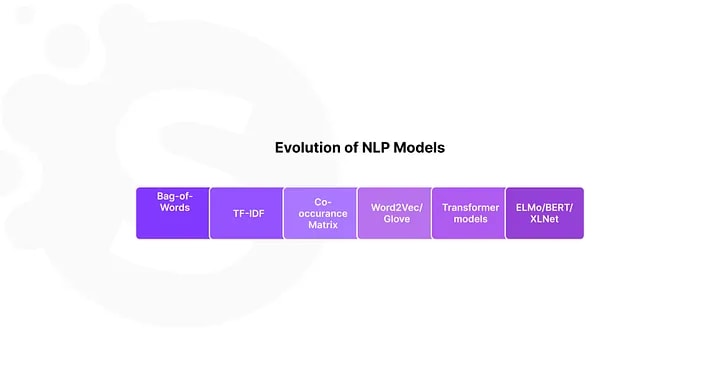
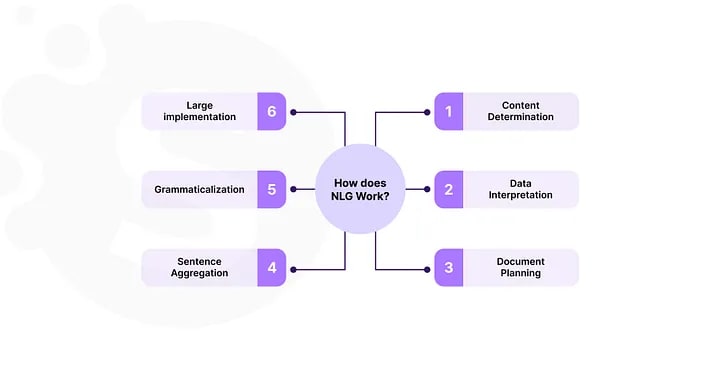





Top comments (0)